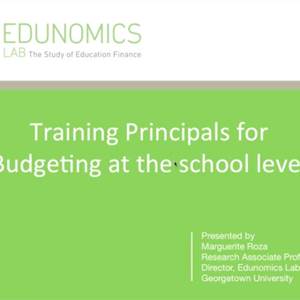15 November 2024
CPS Equity Framework Resource Equity Tool
The goal of resource equity is to create equitable student experiences in learning-ready environments. Resource equity means consistently prioritizing and allocating people, time, and money to align with levels of need and opportunity.

At CPS, we are committed to preparing our students for success academically and socioemotionally. Our district commitment to equity, documented in the CPS 5-Year Vision, is our public and internal call to action for our students. To fulfill our mission for our students, we have to be able to provide them with the right resources at the right moment. Resource equity is one of the four dimensions of the CPS Equity Lens documented in the CPS Equity Framework.
The goal of resource equity is to create equitable student experiences in learning-ready environments. Resource equity means consistently prioritizing and allocating people, time, and money to align with levels of need and opportunity. Resource equity recognizes that providing the same amount of resources to students and schools with different lived experiences, assets, and challenges will maintain the status quo of unequal achievement. One initial component of resource equity creates opportunities to share resources within a school or institution or across schools to meet the diverse needs of all students. The cross-utilization of resources highlights that we are not and should not be working in silos.
Individuals (students, teachers, school leaders) work within classrooms in Schools, which are part of Networks within the CPS District, which operates within, impact on, and is impacted by different sectors (i.e. housing, health, criminal justice) in the City of Chicago, which in turn is situated within the systems operating in the State of Illinois.
The Resource Equity Tool has 5 Phases. The different phases vary in time needed for completion and in most cases completion will not occur in one meeting. The purpose of the resource equity tool is to assist leaders to make decisions or acquire resources to transform the student experience in schools. The approach is to use liberatory thinking and inclusive partnerships as an opportunity to build pathways to resource equity. This document can be used by multiple users including principals, assistant principals, students, Instructional Leadership Teams (ILT), teachers, staff, and department chairs.
Each phase requires you to VALIDATE by having discussions with people from your school community. Validation can be informal (e.g. phone calls or conversations) or formal (e.g. focus groups or town halls). The tool provides space to consider multiple levers for accessing resources. The tool prepares you to consider data, assets, and multiple sources to strengthen our work in finding resources for students. It helps to have a process to be able to say what you need to say as you lead and advocate for your students. Please adapt this tool for your purposes (e.g. to support documentation that can be used for requesting resources or grant applications).
Related Tools
Training Principals for Budgeting at the School Level, Edunomics Lab
Marguerite Roza, Edunomics Lab, Georgetown University
What is Resource Equity
Jonathan Travers
Now is a Great Time to Consider the Per Unit Cost of Everything in Education
Marguerite Roza, University of Washington



